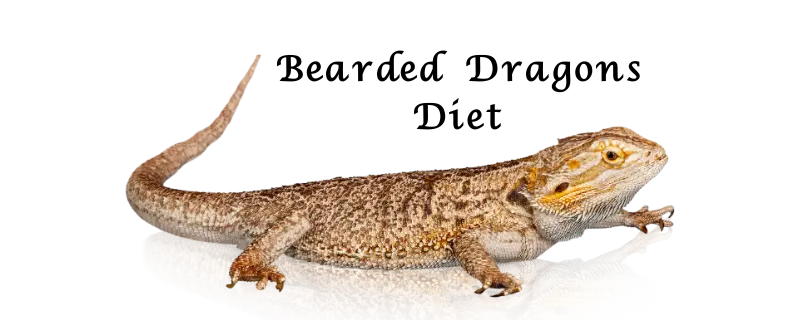Do Bearded Dragons Get More Active as They Get Older?
Bearded dragons are fascinating reptiles known for their friendly demeanor and unique appearance. As a potential or current owner, you might wonder how their activity levels change over time. Do they become more active as they grow older, or is there a decline in energy levels? Let’s delve into this topic to better understand the life stages of bearded dragons and how their behavior evolves with age.
Understanding the Life Stages of Bearded Dragons
To answer this question, it’s essential to first understand the life stages of bearded dragons, as their behavior and energy levels vary significantly throughout their lives.
- Hatchling Stage (0-2 months)
- Hatchlings are tiny, usually measuring 4-5 inches at birth. During this stage, they are highly energetic and constantly on the move, exploring their surroundings and hunting for food. This period is characterized by rapid growth and a voracious appetite.
- Juvenile Stage (2-12 months)
- Juvenile bearded dragons remain highly active as they grow. They’re often seen running around their enclosure, climbing, and chasing insects. Their activity levels during this stage are at their peak due to their high metabolism and need for constant nourishment to support their development.
- Sub-Adult Stage (1-2 years)
- As bearded dragons transition into adulthood, their activity levels tend to stabilize. They are still curious and enjoy exploring but may not exhibit the same frenetic energy as juveniles. This stage is marked by a balance between activity and rest.
- Adult Stage (2-7 years)
- Adult bearded dragons are generally calmer and more laid-back. While they still engage in activities like basking, exploring, and hunting, they spend more time resting. Their energy levels decrease slightly compared to their younger years, but they remain active if their health and environment are optimal.
- Senior Stage (7+ years)
- As they enter their senior years, bearded dragons become less active. Their movements slow down, and they may prefer basking over exploring. This is a natural part of aging and not necessarily a cause for concern unless accompanied by other signs of illness.
Factors Influencing Activity Levels
While age plays a significant role in a bearded dragon’s activity, several other factors influence their energy levels:
1. Diet
- A balanced diet is crucial for maintaining energy. Younger dragons require a diet rich in protein from insects, while adults need more plant-based foods. A poor diet can lead to lethargy regardless of age.
2. Temperature and Lighting
- Bearded dragons are ectothermic, meaning they rely on external heat sources to regulate their body temperature. Inadequate basking temperatures or improper UVB lighting can result in reduced activity levels.
3. Health
- Illness, parasites, or malnutrition can cause a drop in energy levels. Regular vet check-ups and a clean living environment are essential to keep your bearded dragon healthy and active.
4. Enclosure Size and Enrichment
- A small or poorly enriched enclosure can limit a bearded dragon’s movement and discourage exploration. Providing a spacious habitat with climbing opportunities and hiding spots can stimulate activity.
5. Brumation
- Brumation is a hibernation-like state that bearded dragons may undergo during cooler months. During this time, their activity levels drop significantly. It’s a natural process and not indicative of a health issue.
Do Bearded Dragons Get More Active With Age?
The straightforward answer is no; bearded dragons do not generally become more active as they age. Instead, their activity levels tend to follow a bell curve. Hatchlings and juveniles are the most active stages, driven by their growth and need for exploration. As they mature, their energy stabilizes, and adults tend to be moderately active. In their senior years, activity declines further as part of the natural aging process.
How to Keep Your Bearded Dragon Active
If you notice your bearded dragon becoming less active, there are steps you can take to encourage movement and mental stimulation:
1. Provide a Stimulating Environment
- Include climbing branches, rocks, and hiding spots in their enclosure. Change the layout occasionally to keep things interesting.
2. Offer Interactive Feeding
- Use live insects to encourage natural hunting behavior. Let them chase crickets or roaches to stimulate physical activity.
3. Allow Supervised Exploration
- Let your bearded dragon roam outside its enclosure in a safe, supervised environment. This can provide mental and physical stimulation.
4. Monitor Health Regularly
- Keep an eye out for signs of illness, such as weight loss, unusual lethargy, or changes in appetite. A healthy dragon is more likely to be active.
5. Maintain Proper Lighting and Temperature
- Ensure that the basking spot is around 95-110°F (35-43°C) for adults and slightly higher for juveniles. UVB lighting should be replaced every 6-12 months, as its intensity diminishes over time.
When to Be Concerned About Low Activity Levels
While a decline in activity is normal as bearded dragons age, sudden or extreme lethargy could indicate an underlying problem. Consult a veterinarian if you notice any of the following:
- Lack of appetite
- Difficulty moving or uncoordinated movements
- Swelling or injuries
- Changes in skin color or texture
Conclusion
Bearded dragons are dynamic creatures whose activity levels naturally fluctuate with age. While they’re most active during their juvenile phase, they remain curious and interactive throughout their lives if provided with the right care and environment. Understanding these changes and adapting to their needs ensures a happy and healthy life for your scaly companion. By fostering a stimulating environment and addressing their dietary and health requirements, you can help your bearded dragon stay engaged and active at every stage of life.
